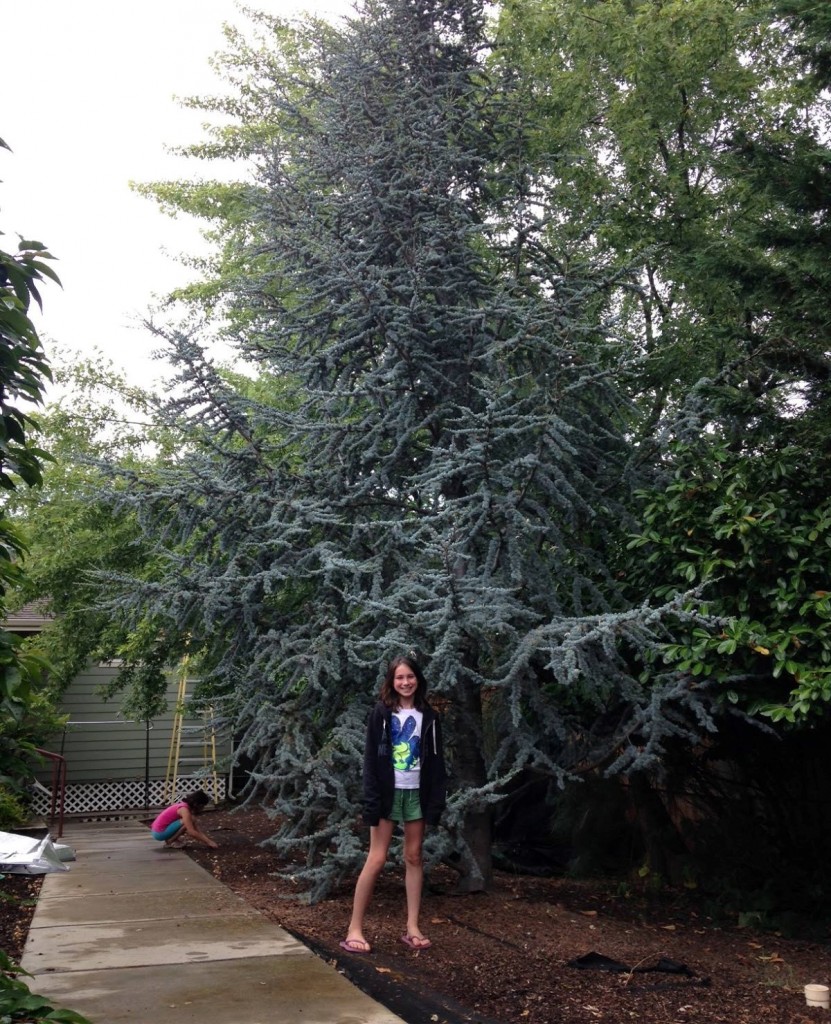We were living in a small town in Southern Oregon when I became pregnant with our first child. Five hours from the nearest major city, I was relieved to learn we were having a girl and would be spared the long-distance search for a mohel. But the only birth ceremonies I’d ever attended were for boys. I didn’t know how to mark the birth of a daughter.
Seeking answers, my husband, Keith, and I ordered a copy of parenting book that spoke to us and began looking for ideas that would feel authentic to me, a yeshiva-educated Jew, and honest to him, an atheist raised in a Catholic home. One passage called out to both of us:
The Talmud tells us of a custom in Ancient Israel in which parents would plant a tree - a pine or cypress tree for a daughter, and a cedar tree for a son. The tree would not be cut until the child was ready to marry, when its branches would serve to hold a chuppah [wedding canopy].
On July 24, 2003, I gave birth to Ella Daneet. A few weeks later, Keith, Ella, and I toured the grounds of the local tree farm and chose a blue cedar sapling. At two feet high, it was about as tall as our little girl. Its needles were as tiny and delicate as the wisps of hair on her nearly bald head.
The day we planted her tree on the grounds of our synagogue, the image of escorting Ella, nestled snugly in her baby sling, to a chuppah, built from branches as spindly as her arms, was more absurd than sublime. My dreams of the very distant future involved a baby that needed neither swaddling nor a car ride to fall asleep and maybe, someday, could drink from a sippy cup.
A year later, our family moved back to the East Coast to be closer to our families. We said farewell to our friends, our jobs, our synagogue, and Ella’s tree. Perhaps this little blue cedar might never provide chuppah poles, or even shade, for our family. But like the old man in the story of Honi the Circle Maker, who plants carob trees that cannot bear fruit in his lifetime, we had no regrets. We had planted our tree for others, just as others had planted trees for us.
Last summer, we decided to return to Southern Oregon for a family trip. We took 11-year-old Ella, along with her 9-year-old sister Zoe, to see her tree. Fresh off the heels of a visit to the giant Redwoods, the girls were unmoved by its magnificence. But Keith and I were breathless. The last time we had stood by this tree, Ella was an eight-pound baby in my arms, and the blue cedar was a knee-high sapling. And now, this:

Trees grow in fairly predictable ways. On the day of Ella’s simchat bat (baby naming), I suppose I could have envisioned the towering cedar, its sturdy branches reaching mightily in every direction. I just didn’t think it would happen so fast.
But I could not for a moment have imagined this confident, long haired young women who drinks -- seltzer, no less -- from a glass. And puts herself to bed. No swaddling or car rides necessary. And I surely didn’t believe it would all happen…so fast.
Just like that, we’ve suddenly reached the day Ella becomes a bat mitzvah. In a few short weeks, we will stand on the bimah beside our little baby, whose feet are now as large as mine, before some of the same friends and family who joined us at her simchat bat. And her blue cedar will be there with us too, in the form of a yad (Torah pointer) that she and her father are making out of one of its branches, collected on our last trip.
It’s still a little hard for me to picture Ella standing under the chuppah, but given how quickly the time from her birth to her bat mitzvah has flown, it’s no longer unimaginable. Really, who knows how big that cedar will grow, and what surprises await us as we watch our daughter become an adult? Whether or not there is a blue cedar chuppah pole in her future, we won’t dare speculate. We’ll simply continue to do our best to nurture our daughter, while our synagogue in Oregon tends to the tree, and we’ll both count our blessings for whatever gifts they provide us in return.
August 12, 2015